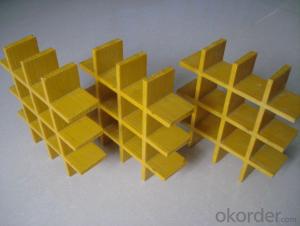Fiberglass woven roving is a versatile and essential textile material that has found its way into a myriad of technical applications. With its unique blend of strength, flexibility, and durability, it has become an indispensable component in various industries, from aerospace to automotive, marine to construction, and even sports equipment. In this article, we will explore the fascinating world of fiberglass woven roving, its properties, applications, and the benefits it offers to modern technology.
The Magic of Fiberglass Woven Roving
Imagine a material that is lightweight, yet incredibly strong. A material that can be molded into various shapes and sizes, and still maintain its structural integrity. This is the magic of fiberglass woven roving. Made from glass fibers that are woven together to form a fabric, it is then impregnated with a resin to create a composite material that is both strong and flexible.
Unveiling the Properties
Fiberglass woven roving boasts a range of properties that make it a top choice for technical applications. Its high tensile strength allows it to withstand significant stress without breaking. The material’s low weight contributes to its ease of handling and installation, while its resistance to corrosion ensures that it can be used in environments where other materials might fail. Additionally, its non-conductive nature makes it ideal for electrical insulation.
Versatility in Action
The versatility of fiberglass woven roving is evident in the wide array of applications it supports. In the aerospace industry, it is used for manufacturing components that require high strength-to-weight ratios. In the automotive sector, it is employed in the production of lightweight parts that improve fuel efficiency and reduce emissions. Marine applications benefit from its resistance to water and salt, making it perfect for boat hulls and other underwater structures.
The Construction Conquest
In the construction industry, fiberglass woven roving is a game-changer. Its use in reinforcing concrete structures enhances their durability and resistance to environmental factors. It is also used in the creation of lightweight and strong building materials, such as roofing and siding, that can withstand harsh weather conditions.
Sports Equipment Evolution
The sports industry has not been left behind in the adoption of fiberglass woven roving. Its lightweight and high-strength properties make it perfect for the production of sports equipment like tennis rackets, golf clubs, and even bicycle frames. Athletes appreciate the performance enhancement that these materials bring to their gear.
Sustainability and the Environment
One of the most compelling aspects of fiberglass woven roving is its sustainability. As a material, it is highly recyclable and has a lower environmental impact compared to many traditional materials. This eco-friendliness, coupled with its durability, makes it an attractive choice for manufacturers looking to reduce their carbon footprint.
The Future of Fiberglass Woven Roving
As technology continues to advance, the potential applications for fiberglass woven roving are boundless. From innovative construction techniques to cutting-edge sports equipment, the future looks bright for this remarkable textile. With ongoing research and development, we can expect to see even more exciting uses for this material in the years to come.
In Conclusion
Fiberglass woven roving is more than just a textile; it is a key player in the world of technical applications. Its unique combination of strength, flexibility, and durability, along with its sustainability, positions it as a material of choice for a wide range of industries. As we continue to innovate and push the boundaries of what is possible, fiberglass woven roving will undoubtedly play a significant role in shaping the future of technology.

